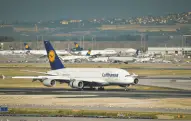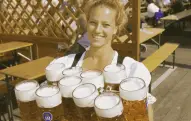TUM Research Aims to Reduce Antibiotic Use in Poultry Farming
 Julia Steinhoff-Wagner, a Professor of Animal Nutrition and Metabolism at the Technical University of Munich (TUM), is spearheading an innovative research project focused on the reduction of antibiotic use in poultry farming while maintaining animal welfare standards. In an interview, she delves into the connection between antibiotic usage, animal health, and nutrition.
Julia Steinhoff-Wagner, a Professor of Animal Nutrition and Metabolism at the Technical University of Munich (TUM), is spearheading an innovative research project focused on the reduction of antibiotic use in poultry farming while maintaining animal welfare standards. In an interview, she delves into the connection between antibiotic usage, animal health, and nutrition.
While substantial research on antibiotic resistance is available, could you explain your current project's objectives?
Our aim is to bridge the gap between the latest scientific insights on minimizing antibiotic use, safeguarding animal health, and preventing resistance, and practical implementation. We will commence by consolidating existing research on antibiotic reduction in poultry farming. Subsequently, we will assess which strategies are most effective for farmers and identify areas for potential enhancements. This project, known as a model and demonstration initiative for animal welfare, primarily serves the knowledge transfer process.
What examples of successful antibiotic minimization are you investigating?
Effective cleaning and disinfection practices are pivotal in curtailing pathogen transmission among animal groups. Livestock density also plays a vital role. Greater space availability reduces bacterial load, a lesson learned during the pandemic--maintaining distance is advantageous. Furthermore, preventing the mingling of animals purchased from various farms is essential. When animals from different sources intermingle, they face an increased risk of illness due to a wider array of microorganisms, akin to the situation in kindergartens. Fortunately, poultry farming typically sources all animals from a single supplier. Ensuring animal health is paramount to prevention. Well-fed animals residing in an environment with minimal exposure to pathogenic germs and stress can handle lower germ loads without falling ill, thus reducing the need for antibiotics.
What challenges are faced in the practical implementation of these concepts in poultry farming?
In cases involving pigs and calves, studies reveal that time constraints hinder farmers from executing specific activities and potential improvements. Additionally, some factors remain beyond their control, such as the health of the purchased animals and the quality of feed, which has become increasingly variable due to climate change. Ensuring consistent high quality with natural products becomes challenging. Climate change introduces additional complications in this regard. Furthermore, issues may go unnoticed--a common phenomenon referred to as operational blindness. Our new project is aimed at identifying strategies that work effectively within poultry farming.
How does antibiotic resistance develop and spread in poultry farming?
In the context of poultry farming, antibiotic-resistant microorganisms can take various routes. In one research study, we discovered that resistant microorganisms are transmitted from parent animals to chicks, entering the farm with them. Within the agricultural setting, resistance can also disseminate among animals through water pipelines and feed if proper cleaning procedures are not in place. Resistant germs tend to hide within these pipelines. Employing the "in and out" method, prevalent in Germany, can help prevent this by ensuring that all animals within a compartment, barn, or the entire herd are moved simultaneously from one place to the next. This process allows for thorough cleaning and disinfection while the barn remains vacant between the rotations of different animal groups. Should germs infiltrate the herd and the animals become ill, farmers are obligated by the Animal Welfare Act to provide treatment, often necessitating antibiotic use for large livestock populations, giving resistant germs a selective advantage to survive and spread.
What is the role of antibiotics in poultry farming?
Poultry farming has been part of the government's antibiotic monitoring program since 2014. Increased awareness of this issue has contributed to a decline in antibiotic use in poultry fattening. However, the overall use of antibiotics in poultry remains higher than in other livestock categories, risking the transmission of antibiotic resistance to human-relevant pathogens. This jeopardizes the effectiveness of drugs used to treat such diseases. Ensuring the continued availability of these treatments is of paramount importance.
For more information:
-
Prof. Julia Steinhoff-Wagner conducts research at the Professorship of Animal Nutrition and Metabolism, focusing on the comprehensive analysis of processes in livestock farming. Her work aims to understand and assess cycles from feed production to animal waste comprehensively. Her particular emphasis lies in challenges related to more sustainable feed and food production throughout the entire value chain, with a specific focus on animal welfare and consumer protection.
-
The German Federal Ministry of Food and Agriculture is funding the project, "Adaptation of an existing management concept to minimize antibiotic use and the spread of resistance in poultry farming with subsequent knowledge transfer" (MiniAbeR), as part of a modeling and demonstration project on animal welfare. The project collaborator is Dr. Celine Heinemann, Institute of Animal Science, University of Bonn.
-
The Hans Eisenmann Forum for Agricultural Sciences at TUM connects around 30 university chairs focused on agricultural sciences, providing a platform for internal university communication and collaboration with external partners from various agricultural science and economics fields, as well as society.
Image copyright T. Bidon / TUM










































